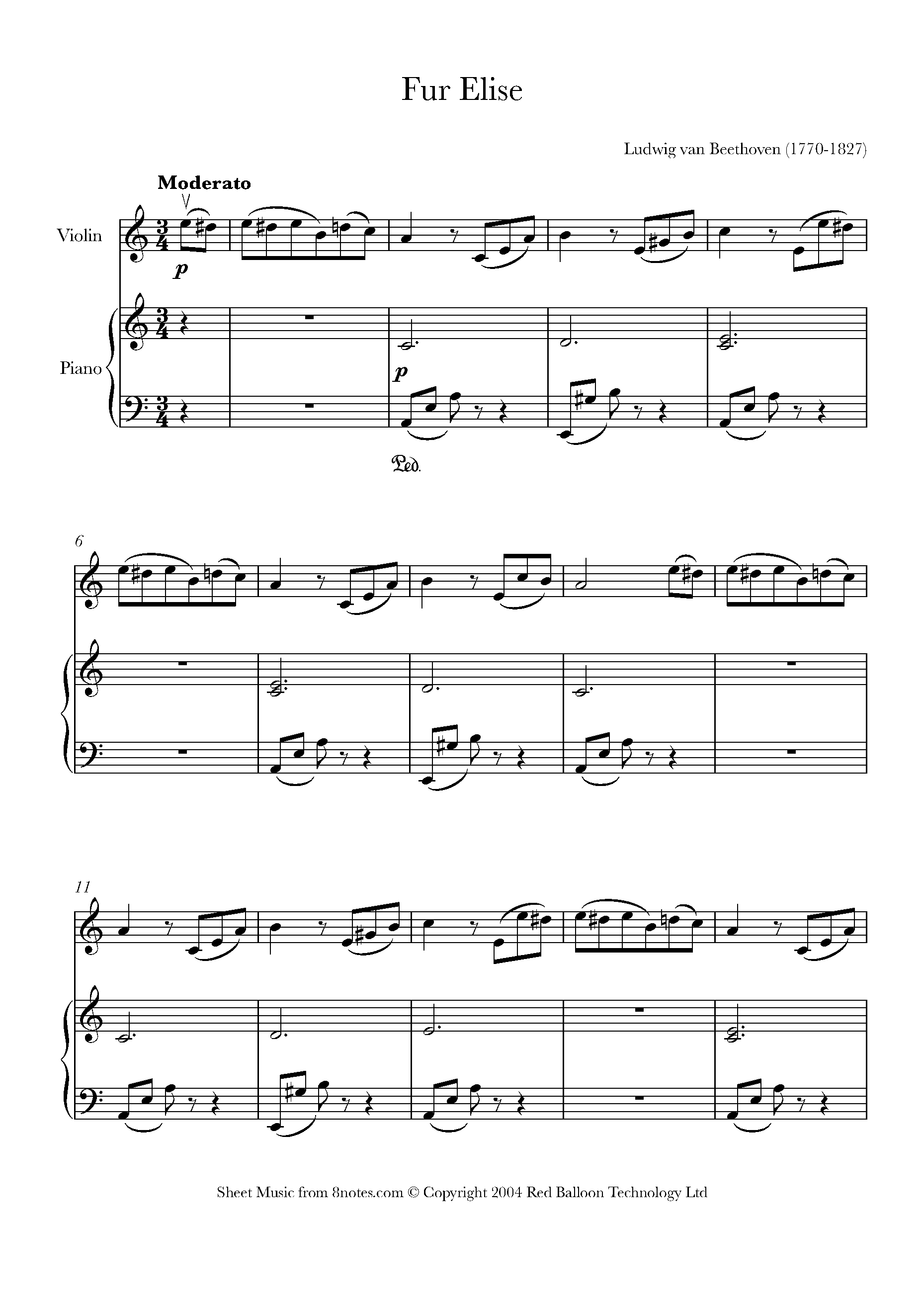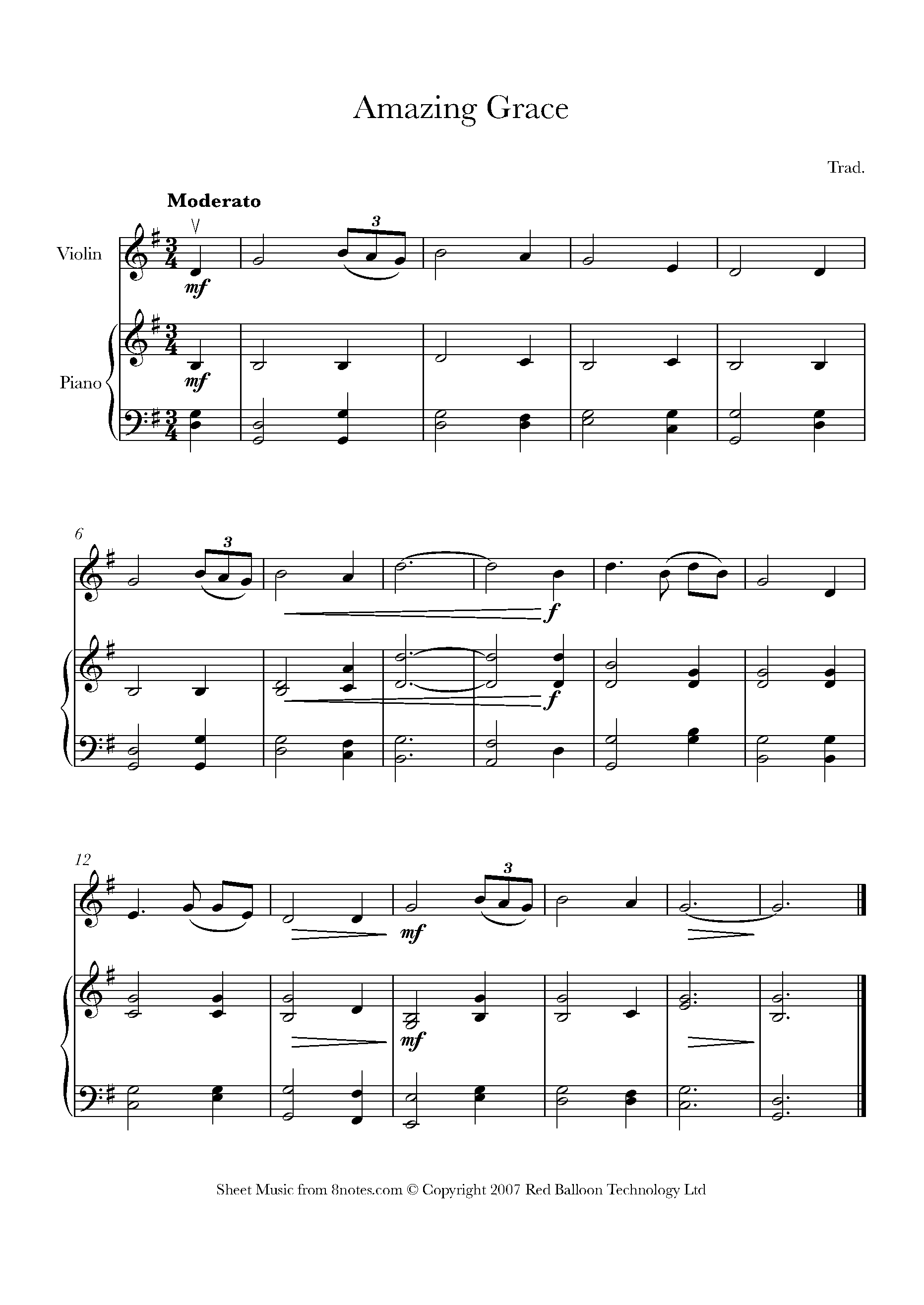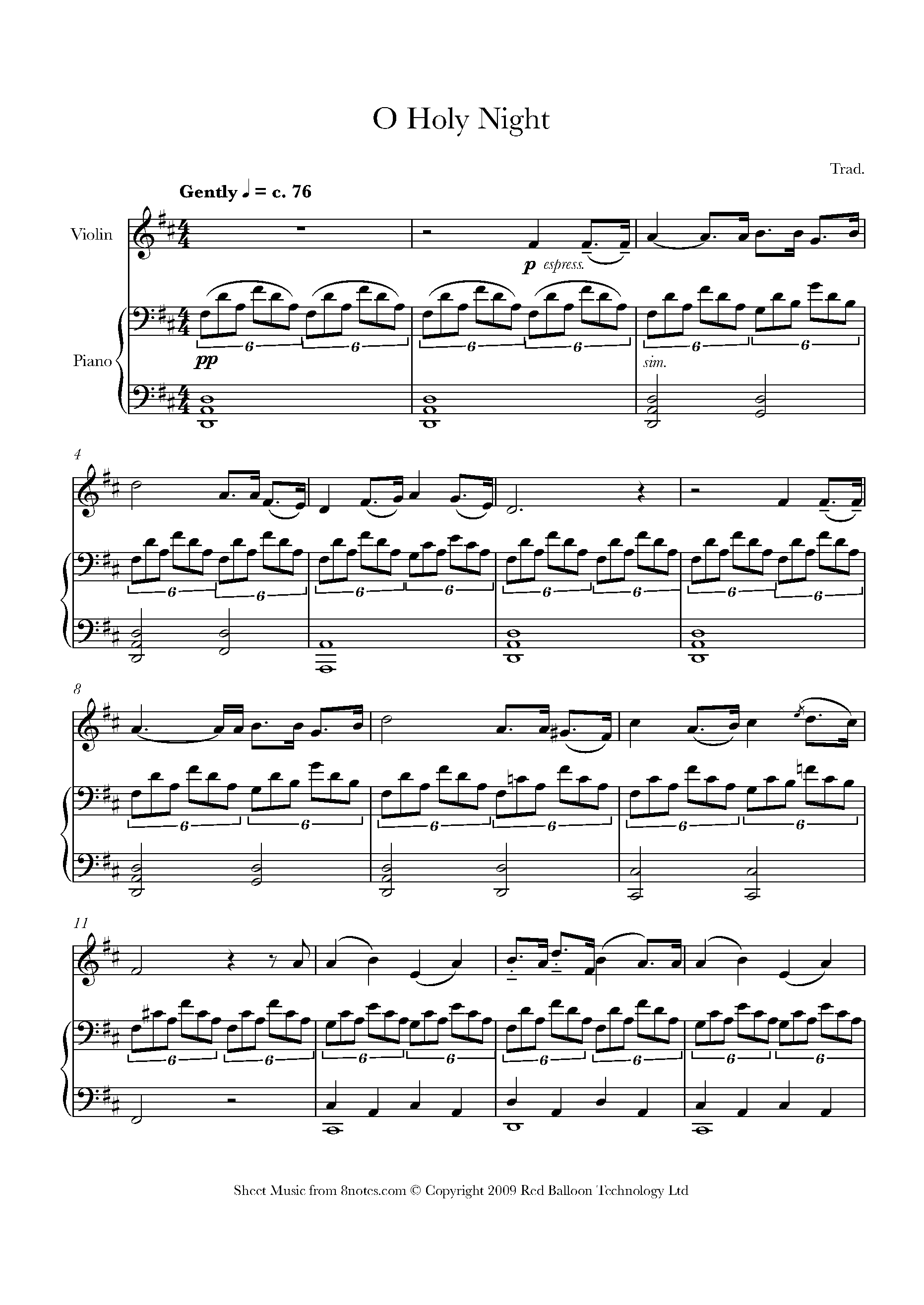15 Easy Violin Solos That Sound Amazing (with links to our easy violin arrangements)
1.
Vivaldi - Spring from 'The Four Seasons'
The Four Seasons was already popular before Nigel Kennedy, half-violinist, half rock-star, turned it into a cultural phenomenon in the 90s. Today Spring from 'The Four Seasons' is the quintessential violin solo, even though that famous melody is actually played by the whole ensemble:

Vivaldi - Spring from 'The Four Seasons'
The should be a feeling of lightness and 'bounce' in this piece. The repeated crotchets (for example, bars 1 and 3) should be a tiny bit detached. Vibrato should also be used rather sparingly, as a little colouring on the longer notes (for example, bars 2 and 4).
2.
When the Saints Go Marching In
This tune became the quintessential New Orleans-style jazz piece, especially as played by Louis Armstrong and his Hot 5 and 7 groups.

When the Saints Go Marching In
Have fun with it! The rhythmic feel should be very loose - you don't need to play it exactly as notated, it should be felt rather than read. It may be repeated a number of times. You can experiment with the tempo too, perhaps by starting slowly and gradually speeding up.
3.
Swan Lake
This is probably the most emotionally-charged melody from Tchaikovsky's famous ballet. It has been widely used in popular culture, perhaps most famously in the final moments of the film Billy Elliot:

When the Saints Go Marching In
Expressivity is everything in this beautiful melody. Make sure you observe every slur and articulation mark and leave enough space (i.e. don't start too loud!) for the big crescendo before the climax at B.
4.
House of the Rising Sun
House of the Rising Sun is a traditional folk tune originating from New Orleans, USA. It was made famous by the Animals cover of 1964:

House of the Rising Sun
Listen to the original song before playing - it will help you to work out the phrase structure. Watch out for those duplets at bars 24, 26, 30, 32 and 34 - they should be played evenly against the triplet rhythms in the piano.
5.
Beethoven - Violin Concerto 3rd movement
This is perhaps the best-known movement from one of the greatest violin concertos. Listen to Hilary Hahn's superlative performance of it with the Detroit Symphony Orchestra:

Beethoven - Violin Concerto 3rd movement
As you can hear, it is very tricky indeed! However, you will be able to impress an audience if you can play that gorgeous main theme. Luckily the 8notes version has been specially arranged with this in mind. Even this version is quite tricky, however, so it will still need serious practice. Play slowly to start, not just to get the notes under your fingers, but because absolute metrical accuracy is required when playing with the tricky off-the-beat accompaniment. There should be a sense of lightness throughout.
6.
David Bruce - Cool Blues
This twelve-bar blues is also a great for practising your improvising. Listen to this imaginative performance, for example:

David Bruce - Cool Blues
Notice how the soloist doesn't try to make the improvisation too difficult, instead concentrating on giving it a convincing musical shape, for example by marking its beginning with a long note and saving the highest note for its end.
7.
Beethoven Fur Elise
Originally for piano, the piece adapts beautifully for the violin:

Beethoven Fur Elise
When playing, ensure that the arpeggios split between the piano and violin (for example at bars 2 and 3) join together if they were one flowing movement. The section at bar 18 may be played with more movement. The transition back to the opening material at bars 23 to 24 should be played gradually more slowly before returning to the opening tempo at bar 25.
8.
Pachelbel - Canon in D
Originally written for three violins and basso continuo, it has nevertheless become hugely popular as a solo. The key here is to set a steady tempo at the beginning and stick to it - it gets tricky later on, so if you've started too quickly you will soon regret it!

Pachelbel - Canon in D
9.
Hart Wand - Dallas Blues
This Hard Wand's most well-known piece and possibly the first published example of a twelve-bar blues. Like When the Saints it is usually performed in the New Orleans Jazz style:

Hart Wand - Dallas Blues
It's another great piece for developing your improvising. Before attempting to play it, listen to the 8notes version, which has a suggested solo from bar 13.
10.
Beethoven - Ode to Joy
From the last movement of Beethoven's Symphony No. 9, this joyful tune works well as a solo too.

Beethoven - Ode to Joy
The melody was originally sung, so make sure that your playing reflects this. You might, for example, consider adding some slurring to this arrangement. When doing so, take into account that phrases occur every four bars, at which point a singer would breathe. Also, if possible, play with a warm vibrato.
11.
Beethoven Moonlight Sonata
The opening of Beethoven's three movement Sonata No. 14 in C# Minor is another work originally written for piano that makes a great violin solo:

Beethoven - Moonlight Sonata
The key here is a smooth bowing arm and a sweet vibrato, especially on those long notes. You can take some liberties with the dynamics. In the video, for example, you will notice the dotted notes (bars 5 and 6) are played quite loudly, with the long notes ebbing and surging in their intensity.
12.
Strauss II - The Blue Danube
Strauss's melody was already hugely popular before Stanley Kubrick's used it in his seminal film 2001. You may also hear it being played as part of the Vienna Philharmonic's New Year's Day concert at the Musikverien, Vienna.

Strauss II - The Blue Danube
If you want to make the piece sound truly Viennese, you might consider playing the second beat a tiny bit earlier than it is notated - one of the defining characteristics of this type waltz.
13.
Mexican Hat Dance
Probably the most well-known mariachi dance from Mexico. It makes a great encore!

Mexican Hat Dance
To work well the piece must seem effortless, but it should also be played very fast. A difficult combination! The key is practise very slowly to start with, gradually building the speed with a metronome.
14.
Amazing Grace
This old Christian Hymn has become immensely popular, both in church and concert hall:

Amazing Grace
Again this should feel as if were being sung, so a warm vibrato and a smooth bow changes are essential. Be sure to try playing with the 8notes band backing, it's a lot more fun!
15.
O Holy Night
If you are looking for a seasonal piece that is more interesting than your average carol, O Holy Night, written by French composer and critic Adolphe Adam in 1847 is an excellent choice. It has been widely covered, for example by Mariah Carey in 2009:

O Holy Night
Though the dynamic shape is indicated, with the high point at bar 37, you might also think of adding your own touches - e.g. the new idea at bar 12 could be emphasised with a louder, warmer sound whilst a crescendo towards bar 20 followed by a diminuendo to bar 23 would also be very effective.